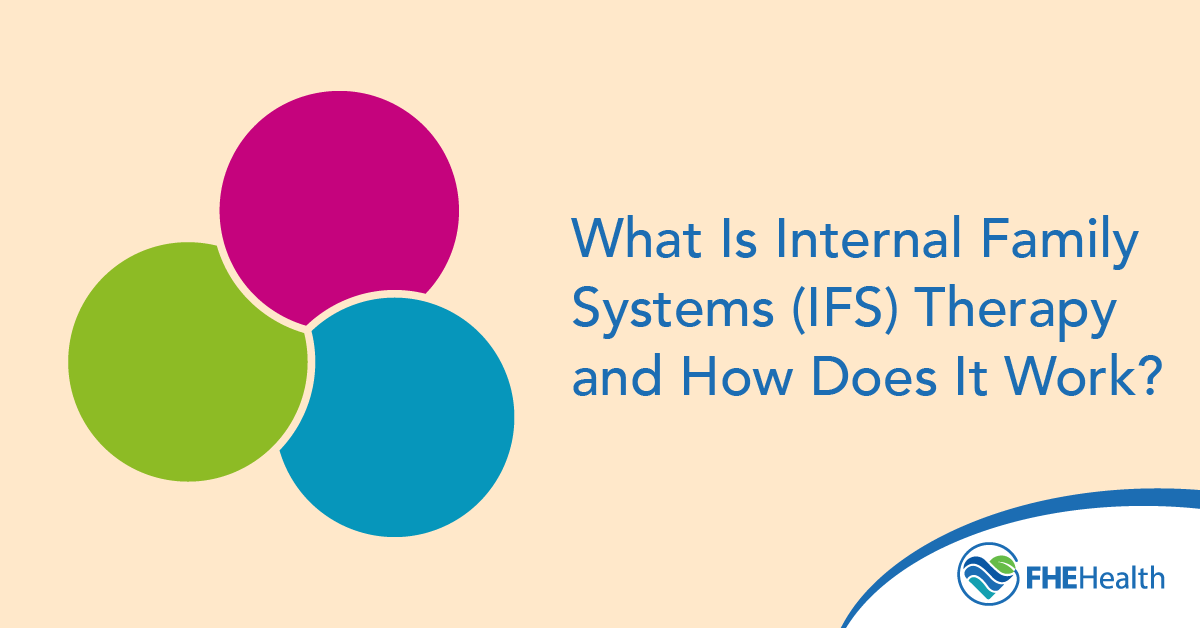
Life can feel heavy when your mind is full of tension and worry. You push one part of yourself forward while another hangs back, guarding against hurt. Internal family systems (IFS) therapy helps you slow down and meet each part of yourself without pressure.
This article explores what IFS therapy is and how it gives those parts a voice. Instead of battling your inner world, you can notice, listen and create space for calm, giving yourself the chance to feel steadier and more balanced in everyday life.
Introduction to the IFS Model
Instead of treating your thoughts and feelings as random noise, the IFS model sees them as parts of an inner family. Each part has a role, even the ones you wish would quiet down. Some push you to stay busy, some hide painful memories and others burst out in overwhelming ways when you’re stressed.
Sometimes these parts help you. Other times, they work against what you actually need. Dr. Richard Schwartz noticed this pattern when he started working with clients in the 1980s. His clients described their thoughts like different people living inside their heads. Instead of calling this a problem, Dr. Schwartz became curious about what these internal voices were trying to accomplish.
He then realized something important: These weren’t broken parts of the mind but protective systems using old survival strategies. This insight became internal family systems therapy, which teaches you to recognize both your parts and your core self.
The Concept of “Parts” and the “Self”
You already know what it feels like to have different sides of yourself pulling in opposite directions. One part says relax, while another screams that you’ll fall behind if you do. IFS therapy leans into this idea instead of fighting it. It names three kinds of parts, each serving a different role.
- Managers try to control life and prevent pain by keeping you organized, driven and in control.
- Exiles carry memories and emotions that feel unbearable, often from childhood, and get pushed away.
- Firefighters jump in when Exiles get triggered, using quick fixes like food, substances or distractions to numb the hurt.
Behind all these parts lives something deeper. In IFS, this is called the Self. It isn’t another part; it’s the calm and centered core of who you are. Your Self possesses natural qualities that can heal and lead:
- Curiosity about what your parts need
- Compassion for their struggles and yours
- Confidence in your ability to handle life’s challenges
- Courage to face difficult truths and make necessary changes
How IFS Helps Address Trauma and Emotional Conflict
The World Health Organization reports that 3.9% of people worldwide experience post-traumatic stress disorder (PTSD) at some point. That’s millions of people carrying trauma, but healing is possible. IFS offers a gentle path forward by working with your protective parts instead of against them.
Trauma often creates parts that feel stuck in survival mode. IFS helps by:
- Recognizing which parts hold your pain without judgment
- Learning what each part needs to feel safe
- Allowing the Self to offer comfort and leadership
- Updating old protective strategies that no longer serve you
By meeting these parts with curiosity and care, you begin to unburden them. The goal isn’t to erase them; it’s to help them relax once they know the Self is strong enough to lead.
What to Expect in an IFS Therapy Session
Walking into your first IFS therapy session might feel strange at first, especially if you’re used to talk therapy where you describe your week. Here, the focus turns inward. Your therapist will help you slow down and notice what part of you is present right now. Maybe it’s the critic that says you’ll never change, or maybe it’s the tired one that wants to give up.
Instead of pushing those parts away, you’ll learn to greet them. You might even speak directly to them in your mind. It’s less about performing for your therapist and more about creating space for your inner system to speak. Over time, you’ll get better at recognizing which part is leading and how to invite the Self to step forward.
In IFS therapy, you’ll also often use imagination to meet your parts directly. Some people picture them as younger versions of themselves. Others notice them as colors, shapes, sensations or even animals. There’s no single right way to connect with your internal system. The goal is simply to notice each part and understand what it carries.
Many people describe a sense of relief when they realize the parts aren’t enemies but protectors who’ve been carrying heavy loads for years. That shift opens the door to healing.
Conditions IFS Is Commonly Used to Treat
IFS therapy isn’t limited to trauma alone. People turn to it for many challenges, including:
- PTSD and complex trauma
- Anxiety and panic
- Depression
- Eating disorders
- Substance use struggles
- Relationship difficulties
- Self-criticism and low self-worth
Because it focuses on how your inner world is organized, it can be applied to many conditions. What matters is your willingness to listen to the different parts of yourself and give space for the Self to lead.
Finding a Therapist Trained in IFS
If you feel drawn to this approach, the next step is finding a therapist trained in internal family systems. Training matters because guiding someone through parts work requires skill and sensitivity. You’ll want someone who can spot when a Manager or Firefighter is taking over and gently bring you back to the Self.
At FHE Health, we specialize in trauma therapy and have clinicians experienced with IFS and other evidence-based approaches. Our team understands the nuances of parts work and can provide the skilled guidance you need for this transformative process.
Want to Try IFS Therapy? Let’s Talk
Healing often begins when you give yourself permission to try something new. If IFS therapy feels like the right path for you, FHE Health has licensed professionals ready to work with you. Reach out today to connect with someone who can guide you through parts work and help you build a stronger connection with the Self. You deserve support that meets you where you are.






